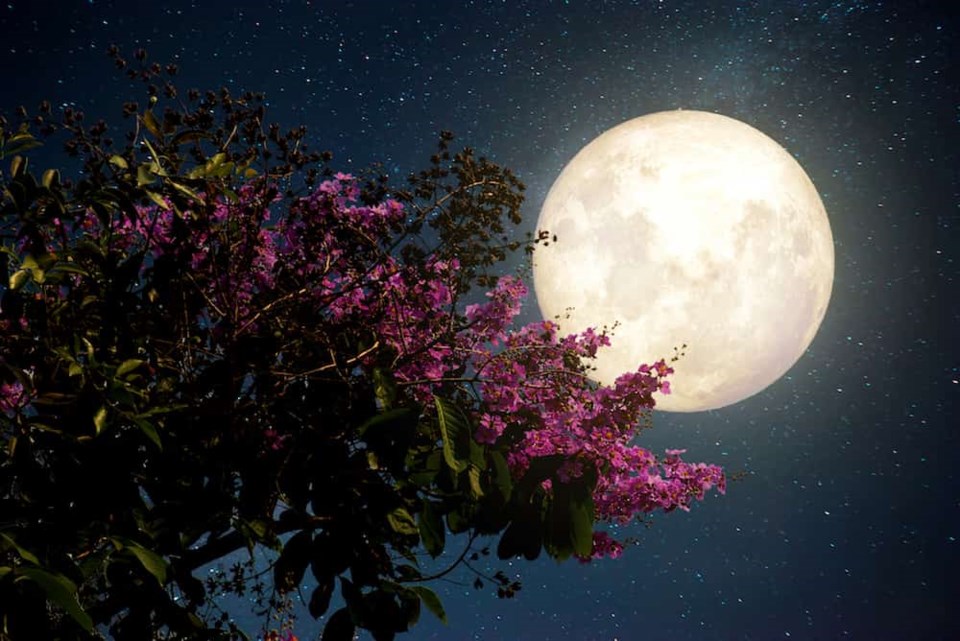Early this month, residents of the Lower Mainland were treated to a dazzling lunar display as a full 'pink supermoon' illuminated partly clear skies. Now, locals will have the chance to soak under the silvery light of the final supermoon of the year: the full flower supermoon.
According to the Old Farmer's Almanac, "The May full Moon marked a time of increasing fertility, with temperatures warm enough for safely bearing young, a near end to late frosts, and plants in bloom."
They note that Native peoples would give distinctive names to each reoccurring full moon to mark the change of seasons. As such, many of these names arose when Native Americans first interacted with colonialists.
The May full moon is also known as the Mother’s Moon, Milk Moon, and Corn Planting Moon. It is set to rise over Vancouver on May 7.
While it is a moon of many names across the continent and across the world, this month's offering is decidedly large. Not only does it qualify as a 'supermoon' - meaning that the moon will look a whopping 15 per cent brighter and seven per cent bigger than a regular full moon due to its proximity to earth - but it is the biggest of the three 'supermoons' this year.
EarthSky notes that astronomers usually refer to 'supermoons' as perigean full moons – a term that simply refers to the moon being ‘near earth.’ With this in mind, May's supermoon will appear the smallest of the three supermoons this year.
Stargazers should opt to travel as far away from city lights as possible in order to avoid light pollution that will obscure the clarity of heavenly bodies. While this works best the in more remote places, anywhere that has a higher elevation will also provide more ideal viewing conditions.



